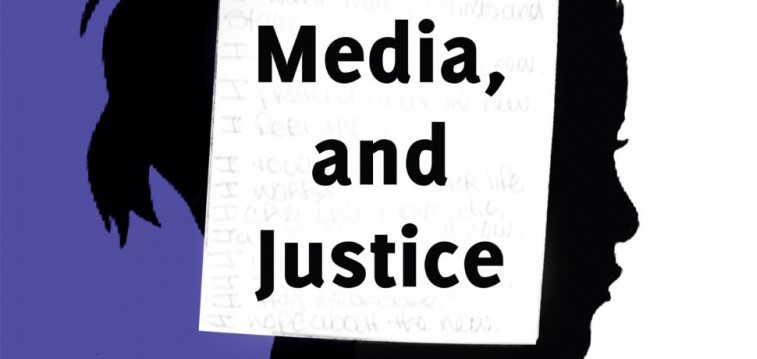Vasudevan, Lalitha and Tiffany DeJaynes, eds. Arts, Media, and Justice: Multimodal Explorations with Youth. (New York: Peter Lang International, 2013). 184 pages. $38.95 (softcover). ISBN 978-1-4331-1855-5.
“This is a book about hopefulness,” begins Art, Media, and Justice edited by Lalitha Vasudevan and Tiffany DeJaynes, which invites readers to think about how youth are treated in our society and underscores the value of media and arts for youth development, particularly youth who are “court-involved.” Arts, Media, and Justice includes nine chapters from educators, researchers, practitioners, and teaching artists who have all collaborated deeply with young people in and out of institutional settings. It explores the art and importance of play, self-expression and multimodality, and imagination in terms of self-discovery, identity, and justice.
These essays highlight the need to see youth media — and media arts broadly — as much more than a final product or artifact. The chapters in this book present “portraits of artful engagement” that demonstrate how such activity provides teens with opportunities for “making and remaking” their identities. Programs like the ReImagining Futures Project, Voices, the Education in Between Project, and Journeys, serve as alternative educational spaces for court-involved youth. Citing Gadsden (2008), the authors demonstrate that “the arts and a multimodal sensibility can foreground creativity and cultivate a more complex understanding of relationships and belonging between learners and their environments than currently evident in schools and even after-school programs” (16). The chapters in this book focus on the lived experiences and stories of court-involved youth, authored by educators, researchers and artists who engaged in collaborations with these youth in multiple modes of art, with various media and genres, including video production, movement and space, photography, theatre, and creative writing. The chapters share in common a core belief in the possibility for change and growth, embracing the spirit of Maxine Greene’s words: “I am what I am not yet” (2). They also call upon readers to “see youth beyond the labels put on them” (12).
We hear the voices of youth throughout the pages of the book. “My favorite place is [Voices] because they are like a family to me. Every time I come they just lighten up my day. [Voices], to me, is a big family that likes to help children succeed in life and wants the best out of people. When I walk through the door, it is like everything is going to be okay. Soon, as I leave, it is like the whole world is against me,” explains Patricia, a writing workshop participant in the Voices program (p. 41). As a whole, the collection of essays allows readers to see youth in a way that is different than how the media portrays them and how they are seen in courtrooms and other institutions. Teens confront the familiar stereotypes that society places on them and use them to propel their understanding in a way that helps them discover and communicate who they are. Each chapter provides powerful testimony to the importance of these art-full sites where youth can safely, creatively, and critically examine and develop their understandings of themselves, their communities, and their social world.
This collection of work focuses on the use of media, art, and play to explore self and society, to engage in creative work that pushes back against the ways in which court-involved youth are framed by multiple social systems and institutions. The authors document with honesty and insight the kinds of risks and vulnerabilities encountered by youth and adult collaborators through this work. They also emphasize the ongoing inquiry and intentionality required in constructing supportive spaces that are just, inclusive, democratic and playful.
The book provides powerful stories from programs that have court-involved youth as their focus, but its lessons will resonate widely within the youth media field, wherever this work is focused on identity, community, and justice. Indeed, the chapters here should inspire and challenge those allied with youth in cultural production that aims to transform young people’s relationships to themselves, each other, their communities, and to the wider social world. It would be impossible to read this book without also recognizing the crucial ways that such work invites transformation in the adults who shepherd and sustain these alternative sites of learning, and in the collective understandings of all participants in what Olga Hubard (chapter 9) terms “the joint growth project that we call education” (159).

